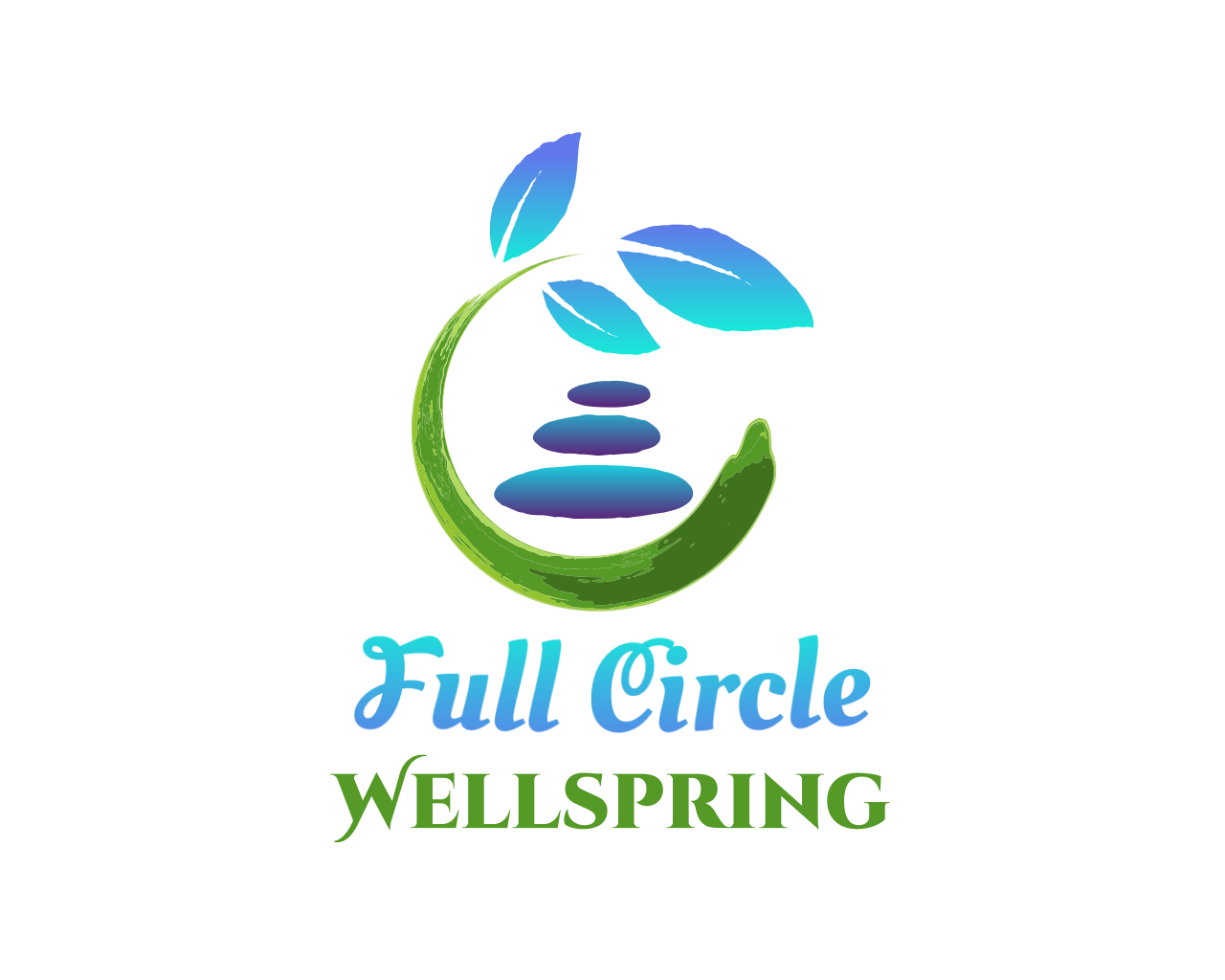Mindful Mondays (ARCHIVES):
I am not a meditation guide or teacher, but I am a practicer of meditation for many years. In my opinion, mindfulness is one of the most important steps to returning to our bodies and staying present in the moment - which is key to overcoming the aftereffects of trauma. This blog captured the essence of the meditation like a transcript written for reader form.
For more (NEW) content (or to listen to these archived episodes) - check out the Podcast or the YouTube channel! Follow/subscribe so you never miss content!
Mindful Mondays|Week 26: Zen
Author Note: If you prefer to listen or watch instead of or along with -
Check out the YouTube video and/or the Podcast audio.
What better way to end Season One of all these Monday meditations than with Zen — which is a Japanese translation of the Sanskrit word meaning “meditation”. For us, we also recognize this word to mean peaceful, calm, enlightened, relaxed. The original word also has to do with simplicity, not worrying, awareness. So let’s play with those concepts today and find a moment of Zen.
Today if you are able, find a comfortable place to lie down, with feet either propped up or the knees bent slightly to keep any tension off the lower back. Whether sitting or standing or lying, put one hand on your chest cavity above your diaphragm and place the other right on or below your diaphragm in the stomach region. Take a nice cleansing inhale and let it out slowly on the exhale. Close your eyes when you’re ready.
For a few minutes of Zen, just lie here. Let your body get heavy and sink into the earth below you. Let your mind quiet itself. And notice your breath, which is always easier to focus on with your hands holding the movements of the body. Stay present in the moment without falling asleep. See if you can straddle the line between staying aware that you are lying here in this moment with the other side of consciousness where total relaxation can occur. Stay with both those realities, and just breathe. Just be Zen.
***
If you’ve got lost in thought and lost your sense of Zen, just come on back. Welcome your mind to anchor down into the breath, feel the sensations below your hands as your inhales and exhales flow, and keep your relaxation at peak calmness without losing your present awareness to your body.
***
That, my friends, is our Zen practice for today. Simple, peaceful, and unhurried. Just being, no doing. Alert but calm. That’s the practice. You nailed it. And if you want more, stay right here after my voice fades, and keep on in the Zen for as long as you want. You earned this; you deserve this. See you next season for more mindful moments together. Be well, Survivors.
Mindful Mondays|Week 25: Yield
Author Note: If you prefer to listen or watch instead of or along with -
Check out the YouTube video and/or the Podcast audio.
It’s common for Trauma Survivors to struggle with intrusive thoughts, compulsions, addictions, obsessions, or maladaptive (once useful, now unnecessary) coping mechanisms. I find it comforting to remember that we can respect the purposes behind these things, and, without judgment, we can be compassionate with ourselves. It can be really healthy to explore and be curious about these types of thoughts and actions, just watching them and recognizing them, without yielding to them. Being aware is always step one in making any positive changes. For example, staying with a strong emotion or sensation is hard for the mind. It wants to distract you in order to protect you. There’s always room to observe why your thought or action is gnawing at your brain and see what it is trying to help you cope with. Just watching its pattern and the way it tries to manipulate you into complying can be useful data for you to break negative cycles and addictive behaviors with awareness.
A good practice is right here in this meditation space. Consider this a bootcamp for learning to not allow your mind to control you. Practicing mindfulness a few minutes each day is training your mind to pause to be present and teaching your thoughts that they are not in charge of you. You can sense things, feel things, think things, and get distracted by things, but, without yielding to their temptations, you can be aware that you moved away from your anchor and bring it right back. Just observe, recognize, and without judgment, re-focus. Let’s try it.
Make sure you are in a space where no external distractions will bother you. Feel your seat grounding you below. Allow your eyes to close or cast a soft gaze downward if that feels safer. Take a cleansing breath. Now find a part of your breath that is most obvious to you — the inhale sensation in the nostrils, the rise of your chest, the pressure expanding in your belly, or the pause in the middle of the inhale and exhale. Just stay steady on that as long as you can. Allow your mind to be here. You aren’t shutting it off; you are just choosing a focus and anchoring down into it. Thoughts will still arise; emotions may come looking for you. Let that be okay. Don’t yield to them; just notice they are there and then jump right back into focusing on the breath.
***
If you got lost in thought or sensation, no judgment. That’s part of the practice. In fact, that is the practice. Now that you know, focus back on your anchor breath, and let your mind settle into it as well.
***
If you are noticing intrusive thoughts or difficult emotions or obsessive-compulsive ideation, that’s okay. That’s what you are sitting here for, to notice and still not give in. Just blow it all away with your exhale and sink your mind back into the focus of your breath. Try this for one more moment.
***
How do you feel after not letting your mind control you? How do you feel not yielding to every whim of your body wanting to move or get up? Was it okay to stay presently focused on the breath instead of following a thought that would have turned into a movie? Do you notice any difference in the clarity of your mind right now?
The more you practice mindfulness, the more you are able to learn how to stay steady in your thoughts and not allow addictions or tricky emotions get the best of you. One moment at a time, one thought at a time. One practice session at a time. You did amazingly well!
When you are ready, open your eyes and root back into your body. Take this focused, unyielding, powerful self on back into your day. Stay well and strong and in charge.
Mindful Mondays|Week 23: Watching the Watcher
Author Note: If you prefer to listen or watch instead of or along with -
Check out the YouTube video and/or the Podcast audio.
To begin, find a comfortable and quiet space where you won’t be disturbed for a few minutes. Find a relaxed yet alert posture that you can maintain. Close your eyes to minimize distractions. Take a long, cleansing breath and find a calm, quiet attitude.
***
Inside this space in your brain, find your breath’s rhythm and follow it. It’s that simple. Watch the inhale as it rises and peaks. Watch the exhale as it falls and stills. Watch the inhale all the way to the peak and the exhale all the way to the stillness at the bottom of the breath.
***
Now for a few moments, can you be aware of the one watching as you watch your breath? See if you can zoom out to watch the watcher? Stay steady on yourself in your mind’s eye as you are the one watching your breath.
***
Can you zoom out even once more to find the watcher who is watching the watcher watching the breath? Can you allow your mind to get lost in the kaleidoscope of watching — all while focusing on the inhale and exhale from start to finish?
***
Today we tried this practice of watching the watcher. This is a method to keep the focus strongly on the breath, without losing the awareness of the present moment. You aren’t in the breath or in the watching. You are the breath, and you are the watching. Your awareness is the thing that’s allowing you to focus on whichever thing you choose — the anchor of the breath, the watching the watcher watch the breath, or any number of the outside focuses or the other watchers. This creates a zooming effect of focus. When you do this, you are training your mind to stay present to even the details zoomed in on the breath itself or zoomed out on whichever watcher you’d like. The universe abounds in opportunities of focus. Today you chose stillness and focused well on that for these minutes. Congratulate yourself on staying with it on a journey inward and outward and above and around.
***
When you’re ready, open your eyes and move watchfully back into your day. Be well, Survivors.
Mindful Mondays|Week 20: Thinking
Author Note: If you prefer to listen or watch instead of or along with -
Check out the YouTube video and/or the Podcast audio.
The mind is a complex place. The brain is made up of billions of nerve cells. The brain loves to think and work on our behalf. Even when we think we have stopped “thoughts”, the brain never actually completely stops doing what it needs to do. Beyond thinking, the brain is responsible for memory, the five senses, emotions, and all the regulation of our entire body. If the computer system breaks down, everything falls apart. So we can honor our brain by allowing thought. Channeling ideas, using thinking when most needed, calming the reacting parts, and staying on top of looping thought patterns is where mindfulness is helpful. We will never actually stop thinking, so trying to do so will only bring frustration and more worry. Meditation is about not resisting the brain’s magical thinking powers. It’s about allowing whatever is there to be there, acknowledging it, and then redirecting. This process, over and over and over again, is a mindfulness practice. That’s where you’ve found yourself today. Let’s give this a try.
Find a comfortable, quiet, relaxed space where you won’t be distracted. Take a cleansing breath. Close your eyes when you are ready. You are now inside the blank space of your mind where anything can happen.
You may notice sensations in your body, the urge to get up and jiggle around, feeling too hot or too cold, hunger, thirst, rapid fire thoughts, worries, a sense of panic, boredom, arousal, decompression from the day, coordination of your schedule, the long to-do list, fears, old grief from losing a loved one, or anything else the mind can think of to distract you. First thing to do here is to be okay with any and all of those things I just listed. Recognize this is the brain’s job. We are not going to try to stop the brain’s activity. We aren’t going to try to take away its magical powers.
Ground down into the seat below you and start to find a place in your body where you most feel your ever-constant breath. The cool air in the nostrils, the upper lip as warm exhales pass by, your chest or belly rising, or your rib cage expanding. We’ll call that the breath anchor. Stay with this focus point for as long as you can. When you get lost in a feeling, emotion, sensation, worry, thought, story, fantasy, or anything that’s outside of the focus on the breath, just recognize it. You can even tell yourself “There went my brain, working hard again.” Then gently, without judgment, just come back to the breath.
***
Did you get swept away downstream with the ever-so-long list of things you ‘should’ be doing? Did your body convince you to start scratching an itch? Are you planning your future child’s wedding again? All that is fine. Just come back. “That’s just my brain doing a good job,” you can say. Focus back on the breath and just stay with it as long as you can.
***
Where is your mind right now? Were you able to stay anchored a little longer this time? Did your brain come back in to do more of its good work? Great! Thank it, and then patiently return its focus on your breath and just breathe.
***
Each time you find yourself floating away like a feather, that’s the practice we call mindfulness. Congratulate yourself for noticing you got lost in thought, and then come on back. That’s how we strengthen the brain’s mindfulness capacity, over and over again. Let’s keep going for just another moment.
***
You did a great job today. Your brain went on thinking, as it does, and you kept on bringing it back, like a great guru of mindfulness. Be proud of the work you put in and continue bringing yourself back to the present moment throughout the day whenever you notice that your brain has taken over again. Nothing here to be upset about; the brain just loves to think. Allow it; acknowledge it. Be mindful of it as you move kindly back into your day. That’s the practice, and you did amazing work. Until next time, be well, survivors.
Mindful Mondays|Week 13: Mindful Moment
Author Note: If you prefer to listen or watch instead of or along with -
Check out the YouTube video and/or the Podcast audio.
Today is more of a classic meditation, so let’s settle into a seated position. A posture of restfulness but alertness. Before you close your eyes, take a moment to ground yourself in the room or space you are in. Gently gaze at the objects in front of you … to your left … to the right … and above you. Try to notice the dimensional space surrounding you and feel a sense of security in this area that you chose to meditate in today. Now let’s close the eyes and take a few centering breaths to settle into this moment.
***
Right now, right here, in this mindful moment, there is nothing to do, nowhere to go. No productivity or creativity is needed, neither any special talents, or anything that needs thinking through. No worry is helpful here. All this is is a few minutes of following your breath, observing yourself breathe, staying in the moment trying to notice when thought sweeps you away, and then coming back to the breath once you realize. There is no judgment here. Your mind is thinking because that’s what the mind does. It’s doing what it knows how. What you are doing here for a few minutes is asking your brain to focus on one sole thing: the breath. This can be a hard task. The practice is in the noticing your mind when it drifts away into thought and then bringing it gently back. That’s what meditation is. Meditation does not mean you can stay with the breath the longest; it means you can catch the wandering and bring it back — over and over and over.
***
Where is your mind now? Have you lost track of your breath? Just realize it. Note “thinking” to yourself and just come back to focusing only on your breath.
***
We aren’t trying to change the breath or manipulate it in any way. We are just sitting in our seat of observance, watching ourselves breathe. Following the breath like a game of “follow the leader” — watching each inhale, the pause, and each exhale. Notice the length of the breath. Feel the soft moment of pause between breaths. Just create a moment of peace focusing on this breath and this breath and this one.
***
If you’ve slid into thinking, that’s okay. Note to yourself “thinking” and gently recalibrate your mind back to the focal point of the breath.
***
Today was a training practice — a more standard version of mindfulness. Allowing your brain to get lost in thought, noticing it, and bringing it back again and again — that is meditation. Mindfulness doesn’t have to be fancy or difficult. It’s just a few minutes of space to allow your mind a rest — a space to not have to worry, fuss, task, plan, fix, or calculate. It’s a mindful moment in a busy world in your busy day to just sit and remember you are a human who breathes. Come back to this meditation anytime you need a moment of mindfulness.


